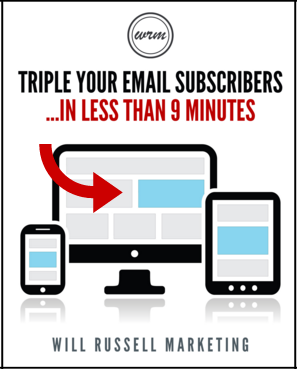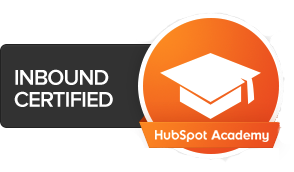In a recent post from a series of interviews with leading Schwab Foundation social entrepreneurs, 5 powerful ideas for global impact were highlighted. Unsurprisingly, the need for scale was a key feature in this list.
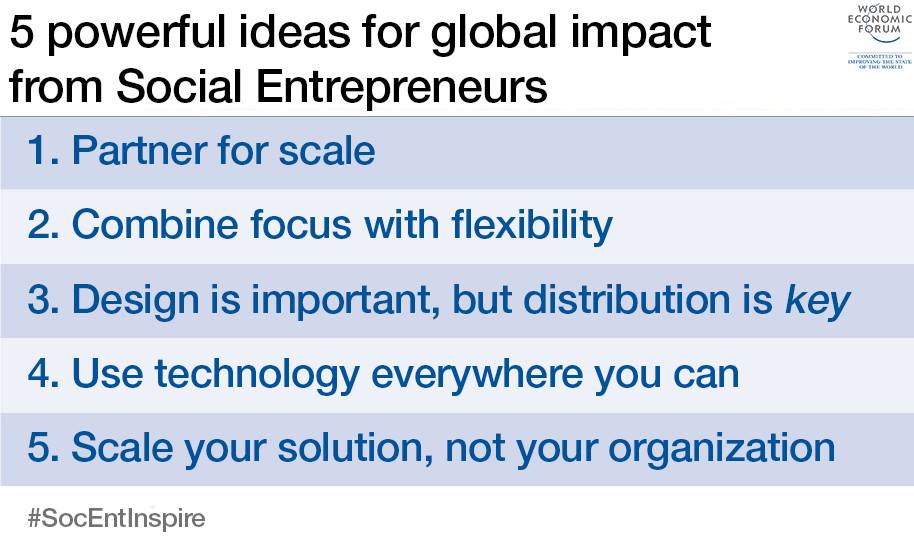
In traditional business, the potential for scale is closely intertwined with the level of resources available. Time and again, however, we’re seeing a lack of resources as the #1 challenge faced by social enterprises and nonprofits.
Fortunately, there’s now another, simpler, option.
The Magic of Marketing Automation
Marketing automation refers to tools, processes, and technologies that allow organizations to do marketing more effectively on multiple channels online (such as email, social media, websites) and automate repetitive tasks.
It may sound complicated, and at times it can be, but there are some pretty basic marketing automation tactics you can implement (right now) that will allow you to scale your business WITHOUT investing more resources.
Recently, we talked about how to optimize your online marketing funnel, and highlighted three key elements to this funnel: convert (lead generation), close (lead conversion), and delight (satisfying customers). Let’s take a look at how to introduce automation to these three elements (thereby reducing your workload and increasing conversions!).
Automating Lead Generation
Lead generation should always be top of mind for business owners and marketers. The more leads we get, the more we’ll convert, and the more impact and revenue we’ll have to show for our efforts.
Managing your funnels can take a lot of work, through. Inbound/outbound lead generation tactics, research, CRM platforms, outreach, testing…to name just a few pieces of the puzzle.
Automation can be a huge help here. Not only can it speed up the process of responding to, and qualifying, leads, it can also help manage your CRM, and – in some cases – take control over the entire lead generation and conversion process.
‘Lead Magnets’ are one example of automating the lead generation process. Essentially, a lead magnet converts website visitors into leads (without you manually managing the process). This means getting them to provide you with contact information, such as an email address.
As you can see in this lead magnet example (a free cheat I offer my site visitors to increase their email subscribers), in order for your visitors to offer up their information willingly you need to offer them something valuable in return. That value usually comes in the form of content, like eBooks or cheat sheets – whatever information would be interesting and valuable to each of your target customers.
Automating Lead Conversion
Did you know, companies that use marketing automation to convert leads see 53% higher conversion rates than non-users? That’s pretty incredible.
Conversion automation can refer to an array of tactics, from email drip campaigns to behavior-based website applications to using CRM tools like Salesforce.
Let’s look at one particularly powerful tactic to automate the lead conversion process: email drip campaigns. This is a process whereby you can convert leads through automated emails sent out over a period of time.
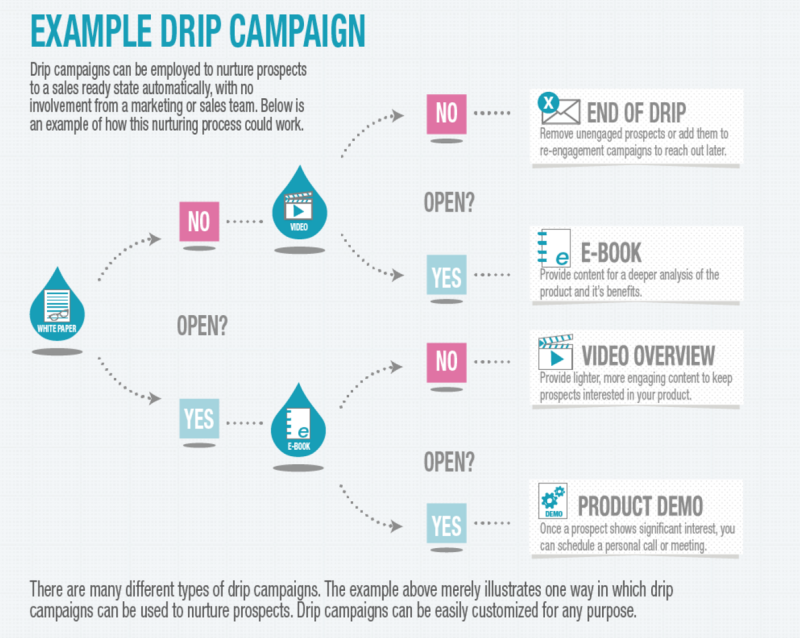
This example from Pardot shows just how simple it can be to integrate automation into your lead conversion process, saving organizations a significant amount of time. We’re currently building out marketing training drip campaigns to help nonprofits and social entrepreneurs improve their marketing. You can check them out here.
Automating Customer Delight
Customer service takes an extraordinary amount of time when managed manually. There are some fantastic platforms out there to help manage and automate general customer service processes, such as FAQs and prioritization of certain issues, but we’re looking at here is how to automate customer service to benefit marketing.
One word: feedback. What if you could automate the collection of feedback, and scale it so that you’re continuously receiving feedback (allowing you to improve your product – and delight your customers).
For example, take a look below at an automated email sent to folks who are midway through our marketing strategy course:
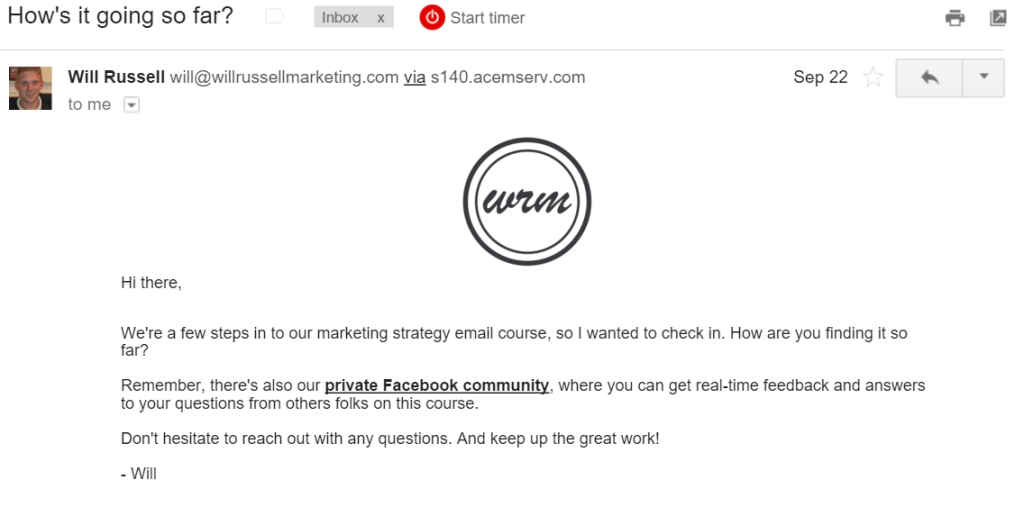
This is a simple way to get direct feedback on how people feel about you, your product, and your organization.In our strategy course, feedback is also requested at the end of the course with a survey and, for those who don’t have a few minutes for a survey, a simple one-click way to provide feedback. All the info gathered is then used to make our training products and programs even better.
Tips to implement marketing automation effectively
I hope this read has provided some insight into how you can start automating your online lead conversion process. To wrap up, I also wanted to share some tactical tips worth keeping in mind as you start to implement this:
1. Maintain the personal connection. With automation, it’s critical to try to humanize your content and make your customer feel like it’s a 1:1 message.
2. Make it easy for the user. You won’t be managing these processes in the hands on way you deal with them now, which means every single ask, request for action, or piece of advice needs to be CRYSTAL CLEAR. There is no room for confusion with automation – keep things simple.
3. Invest in the right tools. There’s a world of difference in quality between platforms, so it’s vital to do the research to work out which will suit your needs. If you’re looking for advice on tools and platforms to make your automation strategy more effective, feel free to reach out and we’ll be happy to help.
Prioritize your outreach, streamline your processes, save money and boost conversions with marketing automation. What are you waiting for?
Learn how to do GREAT marketing...without being a "marketer" in our FREE 7-step strategy course delivered straight to your inbox.
We promise we don't spam, we don't email often, and we'll NEVER share your info with anyone else.

